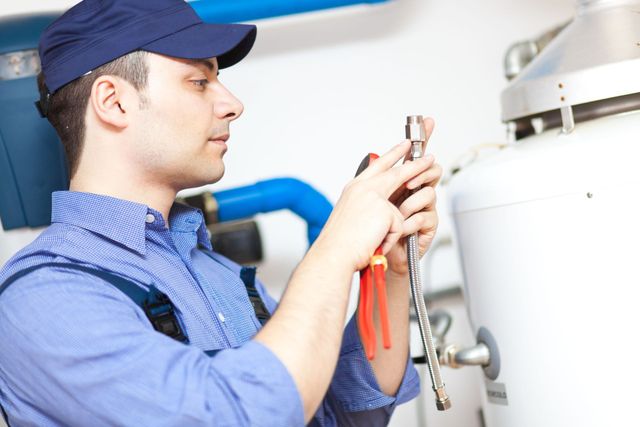Effective Techniques for Caring for Your Home's Hot Water System
Effective Techniques for Caring for Your Home's Hot Water System
Blog Article
What are your thoughts about Water Heater Maintenance Tips You Can't Afford to Forget?

Warm water is crucial for day-to-day comfort, whether it's for a refreshing shower or cleaning recipes. To ensure your hot water system runs successfully and lasts much longer, routine maintenance is vital. This write-up supplies useful tips and understandings on exactly how to maintain your home's warm water system to prevent disruptions and pricey repair services.
Introduction
Keeping your home's hot water system might seem challenging, but with a couple of easy steps, you can guarantee it runs efficiently for years to come. This overview covers every little thing from recognizing your hot water system to do it yourself upkeep pointers and understanding when to contact expert help.
Relevance of Maintaining Your Warm Water System
Regular maintenance not just extends the life expectancy of your warm water system however additionally ensures it runs efficiently. Disregarding maintenance can cause decreased effectiveness, greater energy costs, and even premature failure of the system.
Indicators Your Hot Water System Demands Maintenance
Understanding when your warm water system needs interest can prevent significant concerns. Look out for indications such as irregular water temperature, odd sounds from the heating system, or rusty water.
Recognizing Your Warm Water System
Before diving into upkeep jobs, it's valuable to recognize the standard components of your hot water system. Usually, this consists of the hot water heater itself, pipelines, anode poles, and temperature level controls.
Monthly Maintenance Tasks
Routine regular monthly checks can assist capture small problems prior to they rise.
Purging the Hot Water Heater
Flushing your water heater removes debris buildup, improving efficiency and extending its life.
Checking and Replacing Anode Rods
Anode rods stop corrosion inside the storage tank. Checking and changing them when worn is vital.
Evaluating and Readjusting Temperature Level Setups
Readjusting the temperature level settings guarantees optimal performance and safety.
DIY Tips for Upkeep
You can do a number of upkeep tasks yourself to keep your warm water system in leading problem.
Checking for Leaks
Routinely inspect pipelines and links for leakages, as these can result in water damage and higher bills.
Testing Stress Alleviation Valves
Examining the stress relief valve guarantees it operates appropriately and protects against excessive pressure buildup.
Insulating Pipelines
Shielding warm water pipes reduces warm loss and can save power.
When to Call a Professional
While do it yourself upkeep is useful, some issues call for specialist know-how.
Complicated Concerns Calling For Expert Help
Instances include major leakages, electrical issues, or if your water heater is consistently underperforming.
Regular Professional Upkeep Perks
Professional upkeep can consist of detailed assessments, tune-ups, and ensuring conformity with security criteria.
Final thought
Regular maintenance of your home's warm water system is vital for performance, durability, and cost financial savings. By following these ideas and recognizing when to seek specialist help, you can make certain a reputable supply of hot water without unforeseen disturbances.
Water Heater Maintenance Tips
Test the TPR Valve
Shut off the power and the cold-water supply valve. Place a bucket under the pipe connected to the temperature-pressure-release (TPR) valve on the top or side of the tank. (This valve opens if the tank pressure gets too high.) Lift the valve’s tab to let some water out, then let go. If water keeps flowing, drain the tank partway, unscrew the old valve with a pipe wrench, and install a new one. Check the Anode Rod
Put a hose to the tank’s drain cock and let out a few gallons of water. Now fit a 1 1/16-inch socket onto the rod’s hex head on top of the heater (or under its top plate) and unscrew the rod. If it’s less than ½ inch thick or coated with calcium, buy a new one, wrap its threads with Teflon tape, put it back in the tank, and tighten securely. Use this segmented rod if headroom above the tank is limited. Drain the Tank and Wash Out Sediment
Drain the remaining water in the tank into the bucket, then stir up the sediment on the tank’s bottom by briefly opening the cold-water supply valve. Drain and repeat until clean water comes out of the hose. Close the drain cock, refill the tank, and turn its power back on. Adjust the Temperature
Find the temperature dial on the side of the tank and unscrew its cover. Adjust the dial to 120 degrees using a flathead screwdriver. For every 10 degrees the temperature is lowered, you can expect to save up to 5 percent in energy costs. Turn the water heater off or the thermostat down to its lowest setting if you plan to be away from home for more than three days. Insulate the Pipes
Buy some self-sticking 3/8-inch-thick foam pipe insulation that matches the pipes’ diameter. Slide the foam over the hot-and cold-water pipes as far as you can reach. Insulating the cold-water pipe prevents condensation in summer. Peel the tape and squeeze the insulation closed. If the pipe is 6 inches or less from the flue, cover it with 1-inch-thick unfaced fiberglass pipe wrap. https://www.thisoldhouse.com/plumbing/21016402/how-to-maintain-a-water-heater

I ran across that review on How to Maintain Your Water Heater & Prolong its Life when exploring the search engines. Enjoyed reading our entry? Please quickly share it. Help somebody else find it. I thank you for reading our article about How to Maintain a Hot Water Heater in a Few Simple Steps.
Quote Report this page